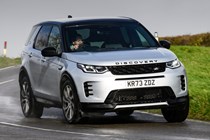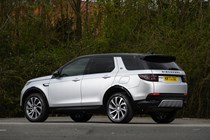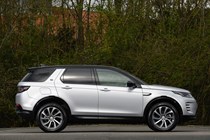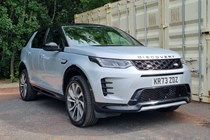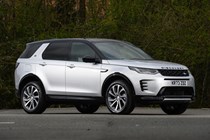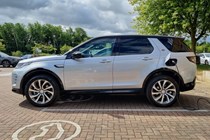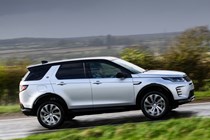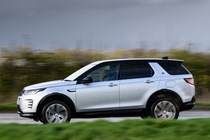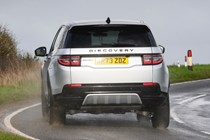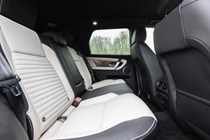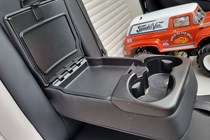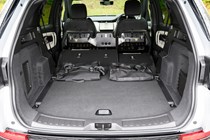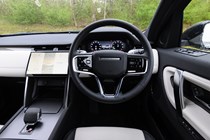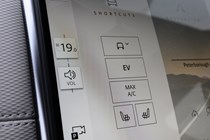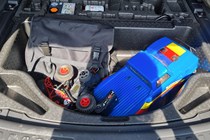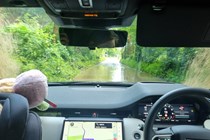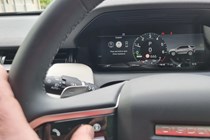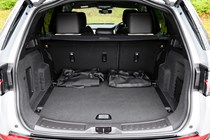
Land Rover Discovery Sport interior, tech and comfort
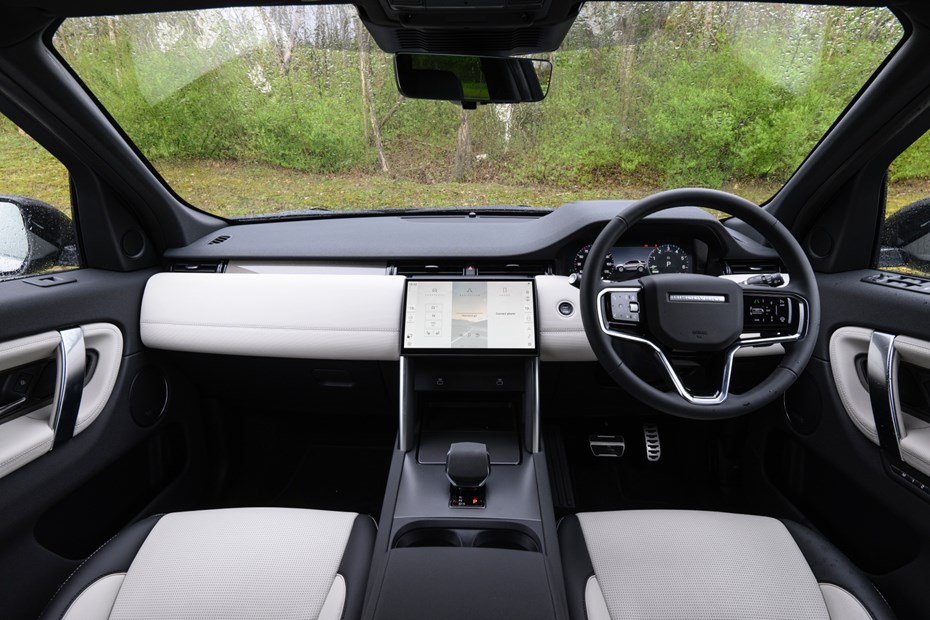
- Simple layout with few buttons
- Pivi Pro infotainment is super responsive
- Removal of physical climate controls a mistake
How is the quality and layout?
Every surface the driver touches regularly feels well-built and suitably premium. Drift just outside these areas though and there are some less pleasant plastics. You’ll find harder stuff at the bottom of the doors, but that’s not unusual amongst rivals.
A facelift in 2023 ditched the climate control panel that used to sit in front of the gearlever. The good news is there’s now lots of easily accessed storage. The bad is that all the climate controls now live in the touchscreen infotainment system.
The temperature adjustment is easily accessed, but it’s still more of a faff than the old multi-function rotary dials. Where those allowed you to change the cabin or seat’s temperature with some twisting and prodding, you need to take your eyes off the road and dive into the screen now.
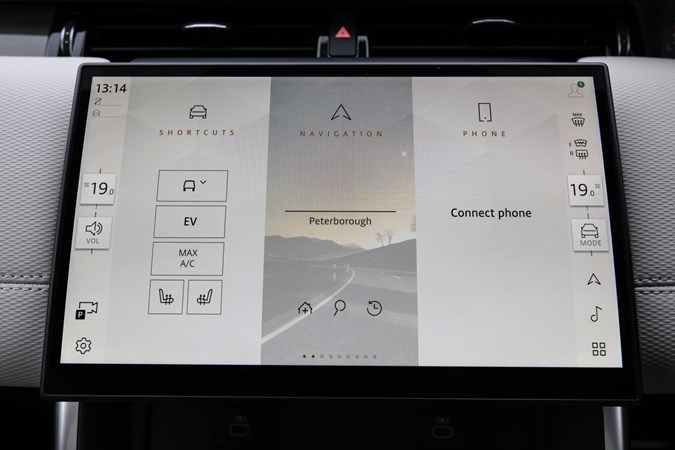
Infotainment and tech
The Discovery Sport’s interior is typically Land Rover, with strong horizontal lines drawing the eye towards an infotainment system in the centre console. It’s mounted lower in the dash than many rivals, meaning you have to divert your gaze farther from what’s going on in front of you to use it.
It features the company’s latest Pivi Pro software system. It’s slick and easy to use, with less of a letterbox display post 2024 facelift. It’s grown to 11.4-inches in size and proves simple enough to navigate, with responsive and reliable software. Unlike some long termers we’ve run, the Discovery Sport’s stayed glitch free.
It’s compatible with Apple CarPlay and Android Auto wirelessly, and there’s a Land Rover app that allows you to monitor the car and perform certain functions. This includes locking and unlocking, turning on the climate control, checking fuel levels and your car’s location.
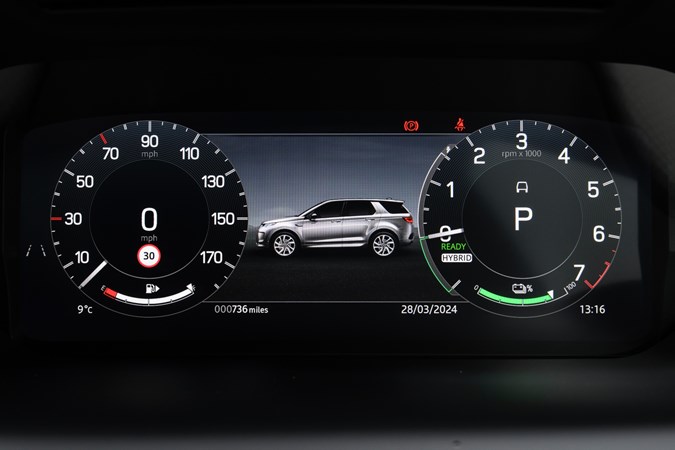
All models get a digital dash, with entry-level S models getting a more basic system we’re yet to sample. The Interactive Driver Display fitted to our long-term SE test car proved clear and easy to read, with a few different layouts and plenty of different content options. It’s not quite as user-friendly as Audi’s Virtual Cockpit, but it’s still impressive.
Comfort
- Spacious front seats with lots of adjustment
- Rear seat passengers get their own climate controls
- Diesel engine can be a bit gruff
The car’s comfortable ride is aided by wide, soft seats with lots of adjustment including lumbar support for both front seats. Cars fitted with the sliding rear seats gain a recline function for the second row, with third row seats much smaller and less comfortable.
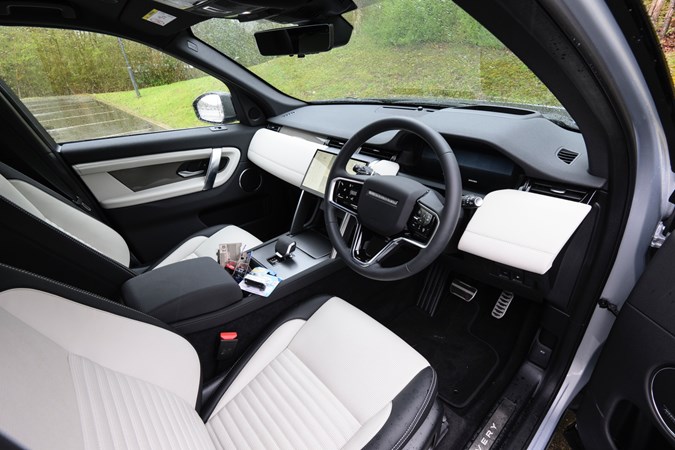
Refinement is also a Discovery Sport plus point. There’s little wind noise around the front windscreen, with only a bit of road roar from the wider tyres and some suspension noise at times. The older petrol engines are quiet unless revved out, with very little vibration transmitted into the cabin. While the diesels can’t quite match it, they’re a small compromise in engine refinement and settle down nicely at a cruise.
The P270e and older P300e plug-ins offer the quietest drive thanks to their ability to zip silently along on the electric motor. Even when the petrol engine kicks in, it remains quiet most of the time with few vibrations sent into the cabin. You’ll hear a faint whine filtering through at low speeds from either the EV motor or the turbocharger, but it’s otherwise a serene vehicle to drive around in.


